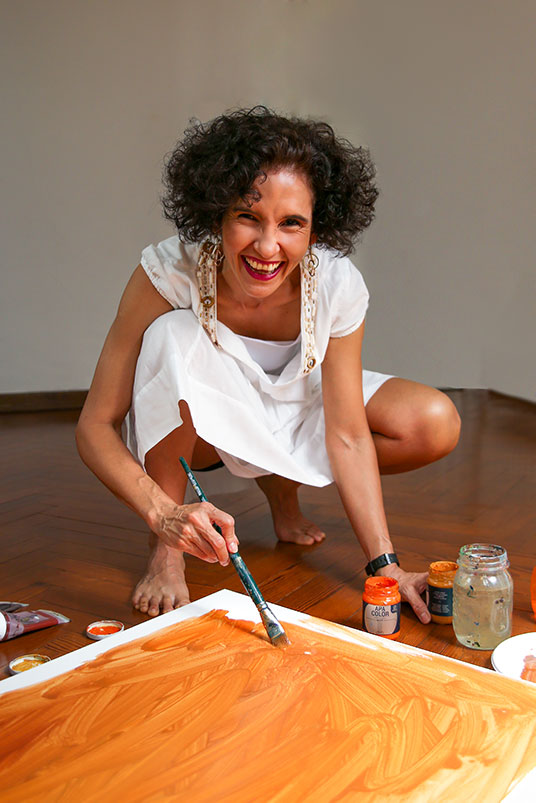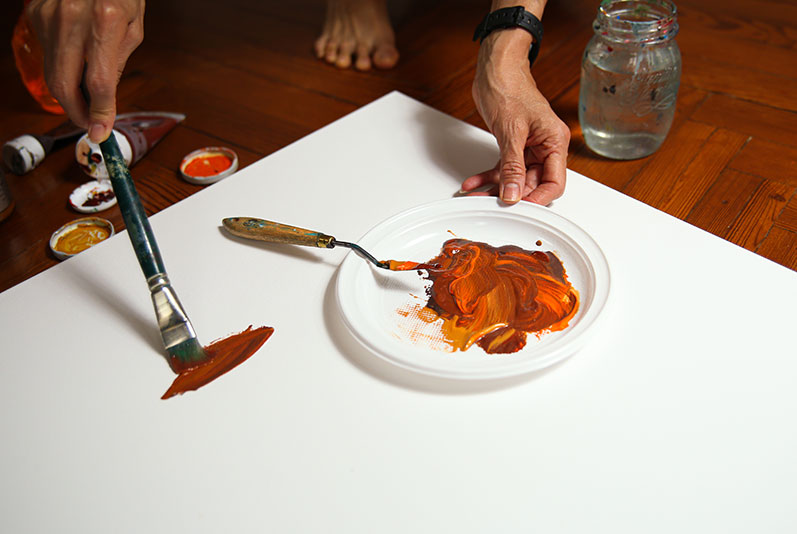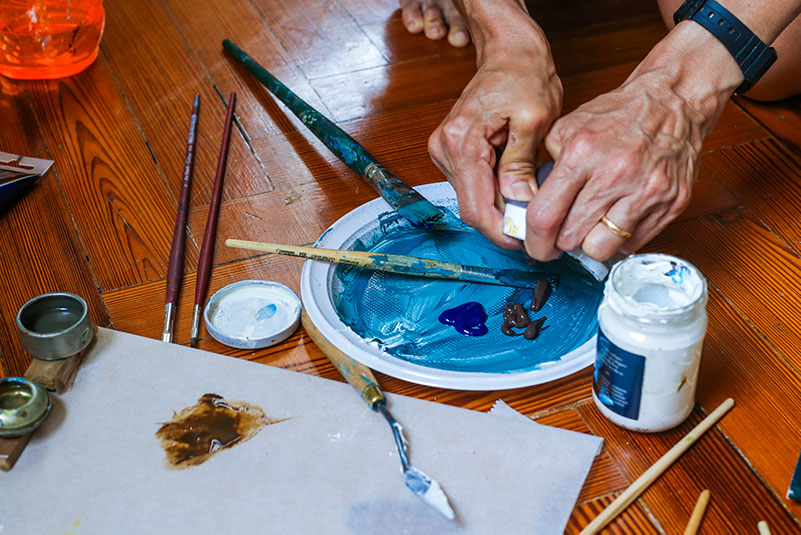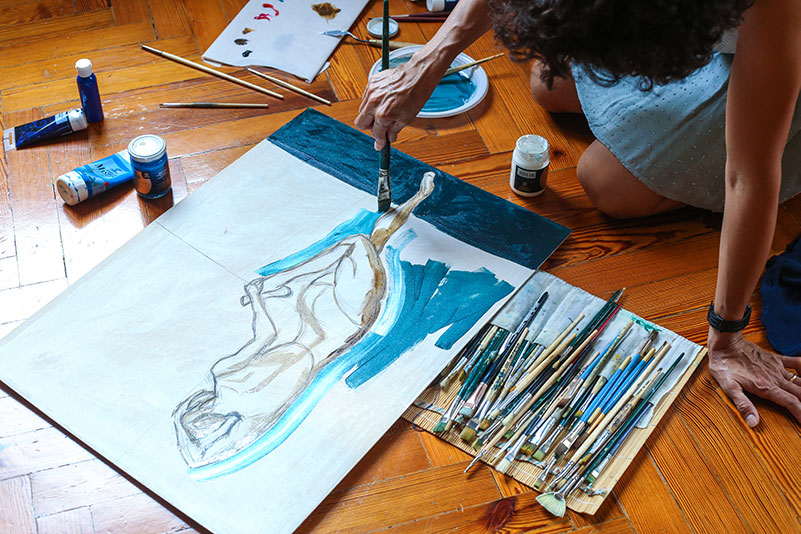The origins of acrylic colors
The genesis of acrylic colors does not correspond to that of acrylic painting. When they were invented, these paints were mainly designed for industrial use and not for artistic purposes. The inventor of these colors was Otto Röhm, a German chemist and pharmacist who, in 1915, brought acrylic paints to the market.
The first artists to use acrylic colors – not on canvas, but on walls – were the Mexican muralists. David Alfaro Siqueiros, a great Mexican painter and muralist, organized the first workshop dedicated to acrylic painting in New York in 1936.
Jackson Pollock has since started using acrylic paints by pouring them directly from the can onto the canvas. Nevertheless, many say that the first to experiment the technique of dripping acrylic paint onto the canvas was Marx Ernst, one of the greatest European surrealist painters.
The turning point… acrylic colors in art
The fifties represented a turning point and the production of acrylic colors was destinated exclusively to the world of art and, therefore, for acrylic painting. These were the years in which artists began to explore new ways of making art, giving way to the so-called pop culture: from abstract expressionism to pop art, the world of art was revolutionized from within, and to do so new materials were exploited.
Among these, acrylic colors, colors were fundamental to some artists such as Andy Warhol, Robert Motherwell, Bridget Riley, to name a few.
In these new colors, pop artists found the concrete possibility of recreating flat images with precise contours, an opportunity that no other type of color, until that moment, had been able to offer.
The advantages of acrylic colors
- These paints are composed of colored pigments mixed with specific resins – the acrylic polymers – from which they take their name.
- Acrylic paint dries quickly, due to its composition. Therefore, it is an excellent choice for those who wish to start and finish their work on the same day.
- Those who want to paint with acrylic can use different media (canvas, plastic, paper, wood).
- Acrylic’s solvent is water water and therefore, it is a harmless material.
- Once dry, other extracts can be created. You can experiment with different techniques by adding water to give the painting a “watercolor” effect.
- Acrylic paint does not require large spaces to work in, since colors are quick-drying and therefore, not very toxic.
- Acrylic paints can also be used to create collages, by adding materials on top of the fresh color. When dry, the material no longer peels off.
- Acrylics, being very resistant to atmospheric agents, are also used in wall paintings. When dry, they do not crack nor flake.
The disadvantages of acrylic paints
Acrylic paintings are piùopaquer and less solid than oil ones. Also, since the paint dries quickly, there is no way to correct errors and you may risk having to throw away the whole canvas.
Some tips for those who want to paint with acrylic
- To paint with acrylic, you need to be familiar and you can start with a small canvas and simple subjects.
- It is important that those who start painting, understand their predisposition for pictorial currents (figurative, abstract, surreal) in order to facilitate the choice of the pictorial subject. In short, you have to listen to yourself and understand your own inclination.
- Acrylic is widely used by those who want to let their imagination and expression free. When you paint with acrylic you can represent geometric subjects in imaginative compositions, because this type of material makes the lines clearer. It is an expressionist technique par excellence.
Therefore, have fun and enjoy painting! Express yourself freely.








Fantastic blog! Do you have any sugyestions for aspiring writers?
I’m planning to start my own sijte soon but I’m a little lost
on everything. Would you propose starting with a ree platform like WordPress or go ffor a
paid option? There arre so many choices out there that
I’m completely overwhelmed .. Any recommendations? Cheers! https://www.waste-ndc.pro/community/profile/tressa79906983/